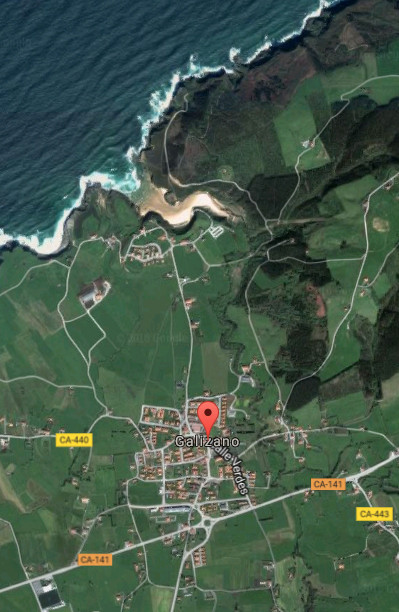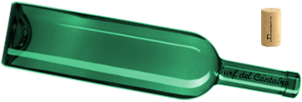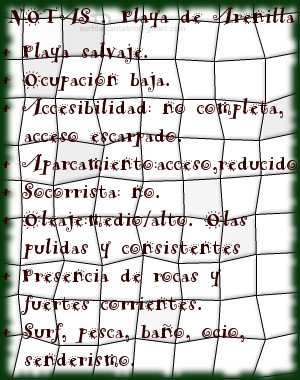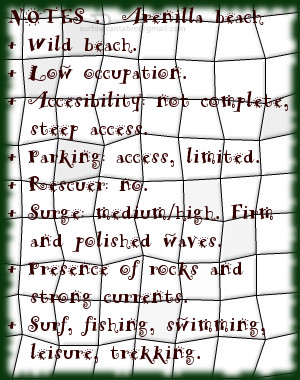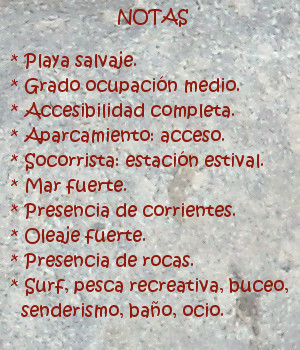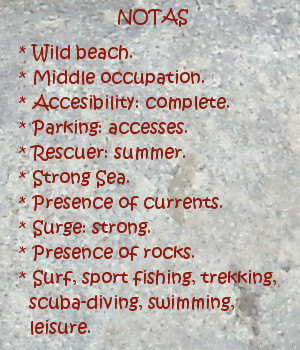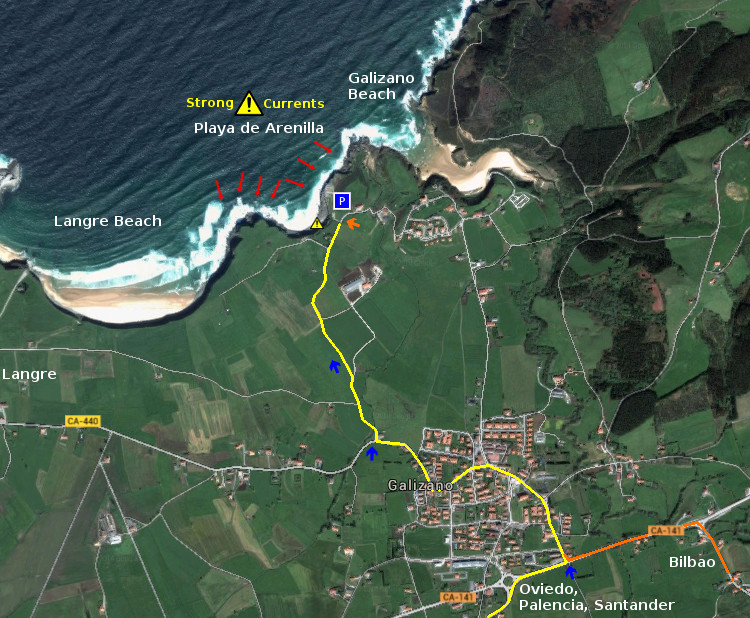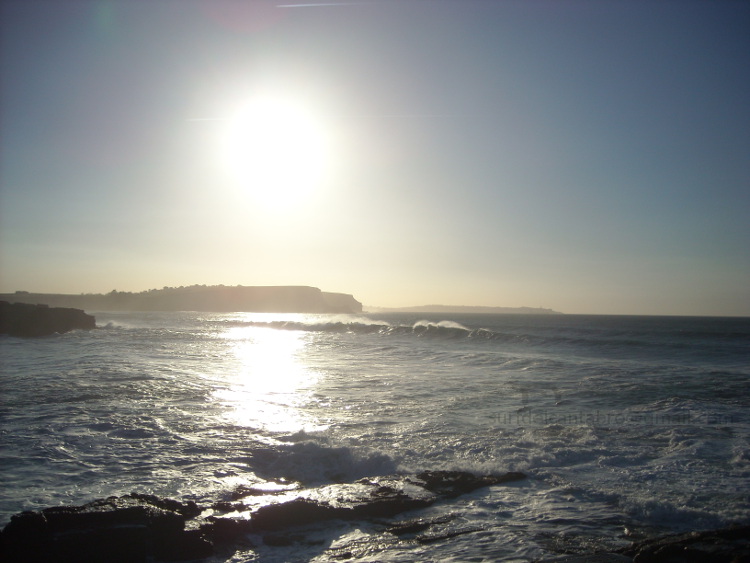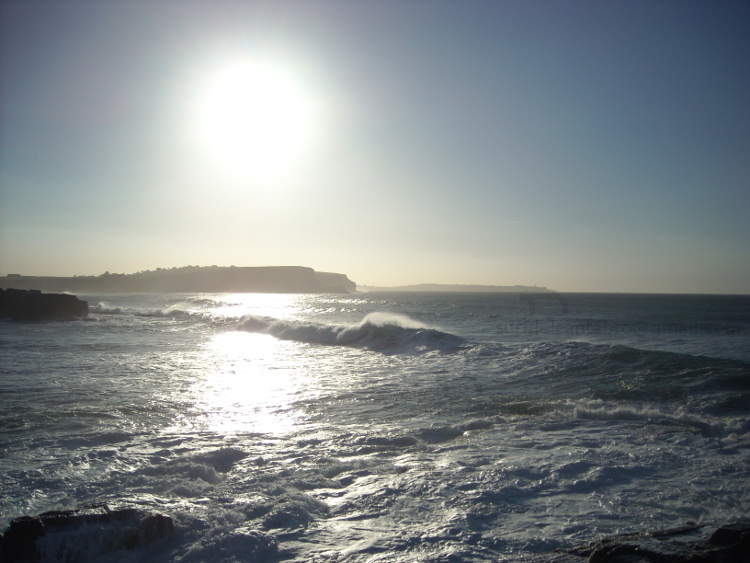Galizano, villa
![]() Galizano es una pequeña localidad emplazada en la costa central de Cantabria. Esta villa costera, perteneciente al municipio de Ribamontán al Mar, concentra su núcleo de población entorno a la Iglesia de Nuestra señora de la Asunción. Edificios blasonados y casas antiguas de piedra describe su pasado. El resto del territorio esta compuesto por tierras de siembra y fincas ganaderas.
Galizano es una pequeña localidad emplazada en la costa central de Cantabria. Esta villa costera, perteneciente al municipio de Ribamontán al Mar, concentra su núcleo de población entorno a la Iglesia de Nuestra señora de la Asunción. Edificios blasonados y casas antiguas de piedra describe su pasado. El resto del territorio esta compuesto por tierras de siembra y fincas ganaderas.
La costa de Galizano, abrupta y salvaje, conserva su estado natural que sólo la meteorología ha condicionado con el paso del tiempo. Acantilados tallados con un lecho de rocas depositadas en su base predominan en la zona, siendo parcialmente visibles en marea baja. La playa de Arenilla, pequeña cala rodeada de acantilados, de apenas 200 metros de longitud que es cubierta con la marea alta condensa la riqueza geológica y paisajística de Galizano. La playa de Galizano, también conocida como La Canal, realiza el tránsito sobre fina arena que comunica el Arroyo Herrera con la parte acantilada que da la entrada del mar a la playa a través de un recorrido serpenteante. Los cañones contemplados desde el mirador que secunda a la playa abrirán una perspectiva de 360 grados , con un sendero a su derecha que permite hacer una hermosa ruta que da acceso a la Cueva de Cucabrera.
Galizano, village
![]() Galizano is an small locality plaed in the central coast of Cantabria. This coastal villa, belonging to the municipality of Ribamontán al Mar, concentrates its center of population close to the Church Nuetra Señora de la Asuncion. Noble buildings and ancient houses of stone describes its past. The rest of the territory is composed by farm and pasture lands.
Galizano is an small locality plaed in the central coast of Cantabria. This coastal villa, belonging to the municipality of Ribamontán al Mar, concentrates its center of population close to the Church Nuetra Señora de la Asuncion. Noble buildings and ancient houses of stone describes its past. The rest of the territory is composed by farm and pasture lands.
The coast of Galizano, abrupt and wild, preserves its natural condition that only the meteorology has determined with the passage of time. Cliffs carved with a bed of rocks deposited in the base prevail in the zone, being partially visible in low tide. The beach of Arenilla, an small cove surrounded with cliffs, with scarcely 200 meters of length that is covered with the high tide condenses Galizano’s geological and landscape wealth. The beach of Galizano, also known as La Canal, does the transition, over thin sand, that communicates the Herrera Stream with the steep part that gives the entry of the sea to the beach across a meandering tour. The cannons that are contemplated from the viewing-point that supports to the beach will open a perspective of 360 degrees, with a path to its right that allows to do a beautiful route that leads to the Cave of Cucabrera.
![]()
 Galizano, village
Galizano, village
